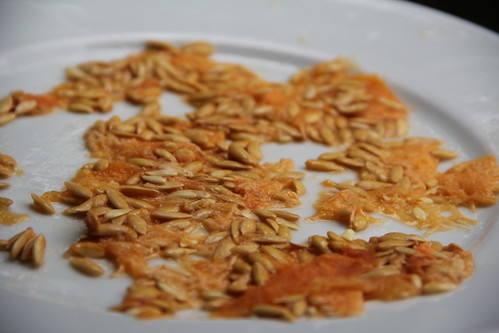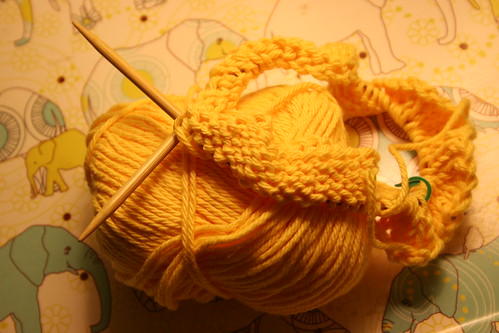I’ve been bugging Finny lately with more and more gardening questions. (You know, she’s a super star garden student now, right? Running her own gardening business, going to vegetable school. I’m fairly certain she even has some “hydro basil expert” business cards or something.)
Lately, these have been questions on seed saving. I have been reading more and more about Monsanto’s reach and power, and I find it very bothersome. I come from farming stock, and I am certain my great grandparents would be horrified by the Supreme Court’s recent ruling in the company’s favor. In turn, I want to grow a garden — and live a life — as Monsanto/GMO-free as possible.
I know. This is a huge rabbit hole. Hang in here with me, and I promise we won’t spend too long staring into the hippie looking glass.
When I am curious about a new hobby, may it be gardening, knitting or cooking, I learn in dribs and drabs. Mostly, I learn from trying, failing and trying again. As such, I’ve been gardening for the better part of a decade without saving seeds, or considering soil amelioration. These both seemed a bit too difficult when I started, and I haven’t returned to the subjects until this recent Monsanto news. And let’s be honest — I’ve been using crap Monsanto seed that wouldn’t have been worth saving anyway. These seeds have been genetically modified so they are infertile, meaning gardeners (or farmers) have to buy them annually.
Brilliant, business-wise. Ridiculous nature-wise.
In my mind, seed saving is like knitting cables, or baking bread from scratch.
First you have to learn how to plant a garden for where you live, nurture it, harvest it and want to do it all over again before you have the energy to figure out how to tinker with what is already working. How can I get better seeds? How can I plant heirloom vegetables that carry on a family’s story? How can I avoid messing up the entire food chain by planting seeds that don’t allow proper pollination?
With knitting, I needed a decade to master simply keeping the stitches on my needles before I learned how to intentionally let a few fly free, twist them around, and cable them to glory.
And baking bread — well, let’s just say I had to learn how to not burn toast. (While I boldly showcase a lot of meals gone right around here, let me reassure you there are still gobs of failures too. Last night, we cut into bloody, undercooked chicken. Gag.) I love to bake bread, especially in a warm kitchen where the natural yeast makes it an easy process. This recipe has made the entire process far easier.
As such, I’m saving seeds, and reading this book. I’m plotting the next garden more carefully, with heirloom seeds from well trusted sources. I’m going through lists of Monsanto products online and bit by bit riding our home of this nonsense. I’m looking into seed-swapping organizations.
The next jump in education in each of these categories: soil amelioration, intarsia, baking challah.
“For, you see, so many out-of-the-way things had happened lately, that Alice had begun to think that very few things indeed were really impossible.”
― Lewis Carroll, Alice’s Adventures in Wonderland & Through the Looking-Glass
~K



